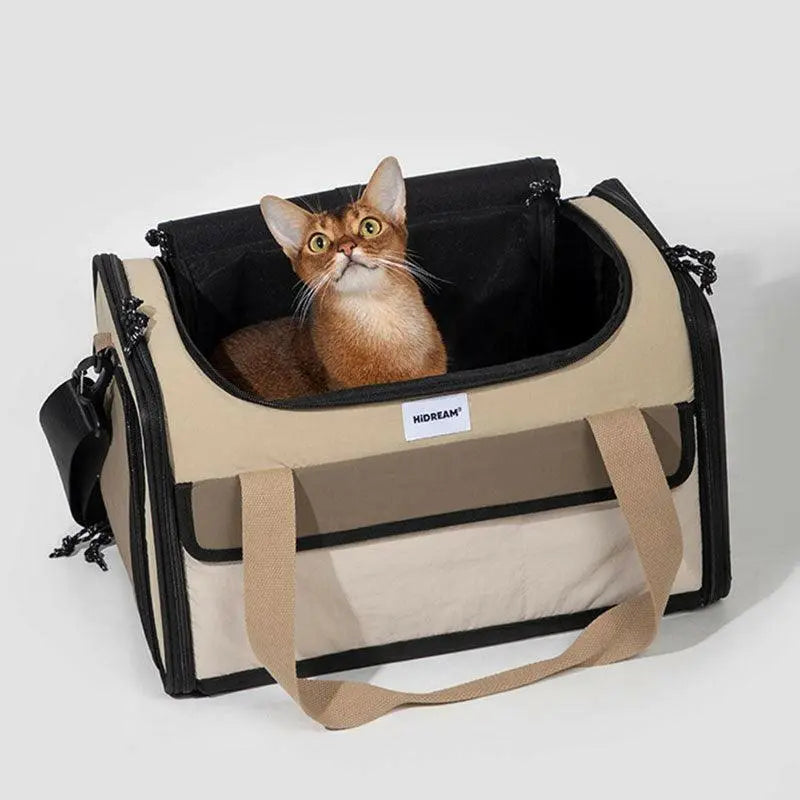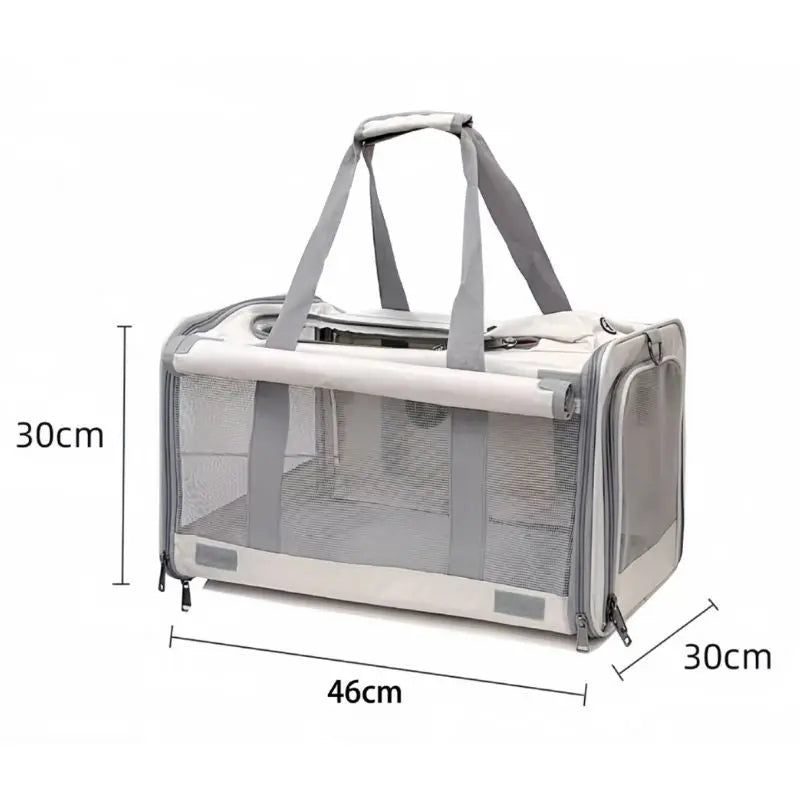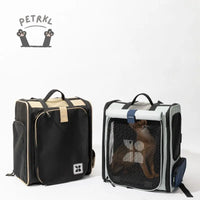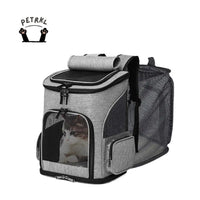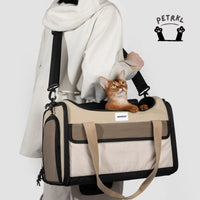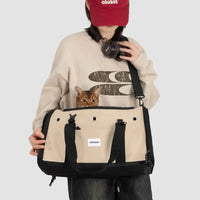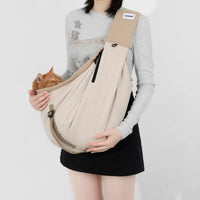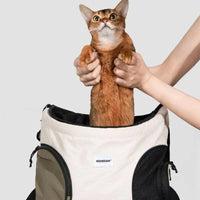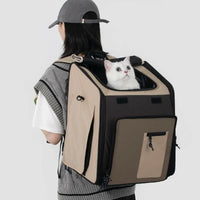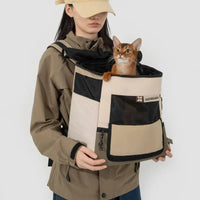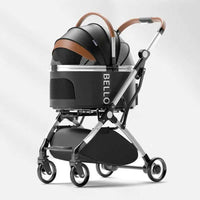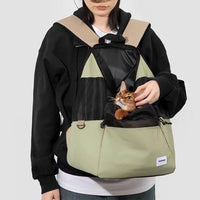
How to Choose the Best Airline Approved Cat Carrier for Flights
op jul. 11 2025
Let’s be honest—traveling with a cat can feel like trying to negotiate with a tiny, furry diva. And when a plane ride gets thrown into the mix? Now you’ve got airline rules, TSA lines, and a very unimpressed cat to think about. That’s why finding the right airline approved cat carrier isn’t just something to check off your to-do list—it’s the key to keeping both of you sane.
Maybe this is your cat’s first flight, or maybe you’ve been through one too many travel disasters with a wobbly old carrier. Either way, you’re in the right place. This guide breaks down what to look for in a flight approved cat carrier—from the nitty-gritty airline policies to the small details that make a big difference in your cat’s comfort.
1. Understand Airline Policies Before Buying an Airline Approved Cat Carrier
Let’s start with the not-so-fun part: airline policies. Just because a carrier says “airline approved” doesn’t mean every airline will agree. Unfortunately, there’s no universal standard. Some airlines are pretty relaxed, while others will literally pull out a tape measure at the gate.
Pro tip: Head to your airline’s website and find their pet travel page. Check for:
- Maximum dimensions (especially under-seat space)
- Weight limits (cat + carrier combined)
- Accepted carrier types (soft-sided vs hard-sided)
Some soft carriers can squish to fit under the seat, which many airlines are okay with. Others expect exact measurements—no compromises.
2. Size Matters (But Bigger Isn’t Always Better)
Your cat needs enough room to turn around, stretch out, and settle in—but if the carrier’s too big, it might not fit under the seat. Tricky, right?
Here’s a simple trick:
- Measure your cat’s length (nose to base of tail) and height (floor to head or ears)
- Add an inch or two for comfort
And don’t forget: some airlines post under-seat carrier size limits by plane type. A perfect fit at home might not fly on a smaller aircraft.
3. Soft-Sided vs Hard-Sided Carriers
When it comes to cat carriers for airline travel, soft-sided ones are usually the winner—especially if your cat is flying in-cabin.
Soft-Sided:
- Lightweight, squishable, easier to stash under a seat
- More forgiving on your back and shoulders
- Often more comfortable for your cat
Hard-Sided:
- ✅ More protective if checked in (but that’s rarely a good idea for cats)
- ❌ Bulky, heavy, and harder to squeeze into tight spaces
Unless you have a specific reason for going hard-shell, stick with soft.
👉Curious how soft-sided carriers perform in real travel situations?
Check out our JetTote vs Other Carriers Comparison Guide to see how it stacks up.
4. Look for Great Ventilation and Visibility
A breathable carrier = a calmer cat. Look for carriers with mesh panels on at least two or three sides. Not only does this keep the air flowing, but it lets your cat peek out and see you—which can be really reassuring.
Bonus: Some cats feel safer when they can hide. In that case, choose a carrier with roll-down covers or dark mesh that lets them feel tucked away.
5. Easy Access & Escape-Proof = Must-Have
TSA might ask you to take your cat out of the carrier during screening (yes, really). You’ll want something that opens easily for you, but not for your escape-artist cat.
Look for:
- Lockable zippers or clips
- Entry points on the top and side
- An interior leash clip for extra safety
The goal: quick access when you need it, total security when you don’t.
6. Don’t Skip Comfort Features
A carrier doesn’t have to be fancy, but a few cozy touches can make a world of difference. After all, would you want to spend three hours in a plastic box?
Want a carrier that already includes most of these comfort upgrades?
Take a look at our JetTote – Airline-Approved Pet Carrier to see all the features built in.
Nice-to-haves include:
- A soft, washable padded base
- Quiet zippers (less scary sounds!)
- Expandable sides for more space during layovers
- Pockets for treats or calming sprays
If your cat will be in the carrier for a while, these upgrades are 100% worth it.
7. Practice Makes Purr-fect
Don’t spring a new carrier on your cat the night before a flight—that’s a meltdown waiting to happen. Instead, let them explore it well in advance. Leave it open in your living room with a blanket or toy inside. Let them nap in it. Toss in treats. Make it theirs.
That way, when travel day comes, it won’t feel like a punishment.
8. Quick Feature Checklist
Here’s your cheat sheet for picking the right cat carrier for airline travel:
- Soft-sided and airline-friendly
- Sized to fit under a plane seat
- Mesh panels for airflow and visibility
- Secure zippers or clips
- Padded and washable interior
- Top and side openings for easy access
9. Bonus: Use It at Home, Too
Want your cat to actually like their carrier? Make it part of their regular life. Leave it out at home as a cozy hideout or nap spot. Familiar smells = instant comfort when travel day arrives.
Final Thoughts
The right airline approved cat carrier is more than just flight-safe—it’s cat-approved, too. It should be safe, snug, airline-compliant, and most importantly, something your cat feels okay spending time in.
With a little planning (and a lot of treats), you and your feline sidekick can take to the skies with confidence.
Need a carrier that checks all the boxes? Meet JetTote by Petrkl—your stylish, breathable, airline-ready solution for calm and comfy cat travel.
Other options:
Product Size:M:13.7*9.9*9.4in/L:16.9*11*9.8in
Product Size:13.8×7.9×14.2 in(35×20×36 cm)
Product size: 46cm*30cm*5cm(18.1*11.8*2.0 in)
Product size:14.4 × 11.0 × 16.9 in

